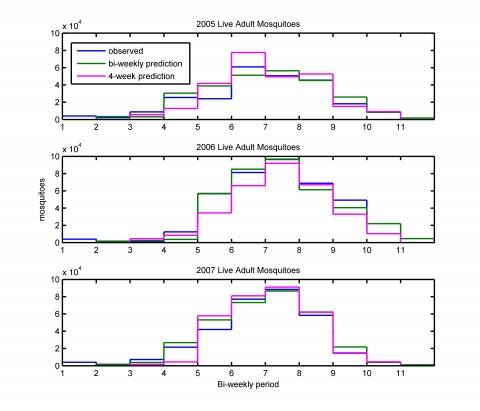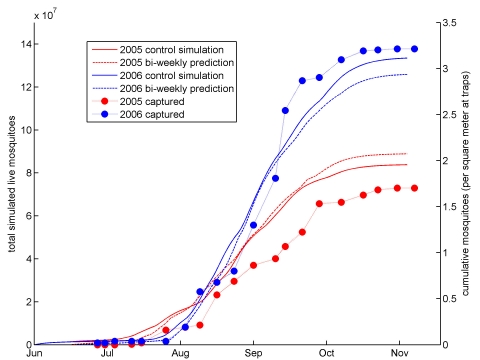We have developed a methodology to make early warnings of malaria transmission using HYDREMATS. Early warnings of malaria transmission are an important component of malaria control, as they allow local officials to prepare for or even prevent epidemics by reallcoating limited resources including staff and medication, conducting vector control activities, and urging people at risk to take precautions to avoid insect bites.
HYDREMATS is forced by observed rainfall until the date the prediction is made. Rainfall information at any given time will give information about mosquito populations in the near future, as there is a natural lag time between rainfall and the resulting water pools and emerging mosquitoes.
To extend the simulation into the future, HYDREMATS is forced by the seasonal mean rainfall for that period. We made predictions two weeks and four weeks in advance. Predictions made two weeks in advance were very accurate compared to simulations using observed rainfall. Predictions made four weeks in advance have the advantage of a longer lead time, but the results are less accurate than the 2-week predictions.
This figure shows the number of mosquitoes simulated by HYDREMATS using observed rainfall in blue, predictions made two weeks in advance in green, and predictions made four weeks in advance in pink. The bi-weekly prediction is able to predict the timing of the peak mosquitos, as well as difference in mosquito densities between the three years simulated.
The results from the two-week simulations correspond well to the number of mosquitoes captured in the field.


